Roman Government › Tarquinia » Ancient origins
Articles and Definitions › Contents
- Roman Government › Antique Origins
- Tarquinia › Ancient History
Ancient civilizations › Historical and archaeological sites
Roman Government › Antique Origins
Definition and Origins
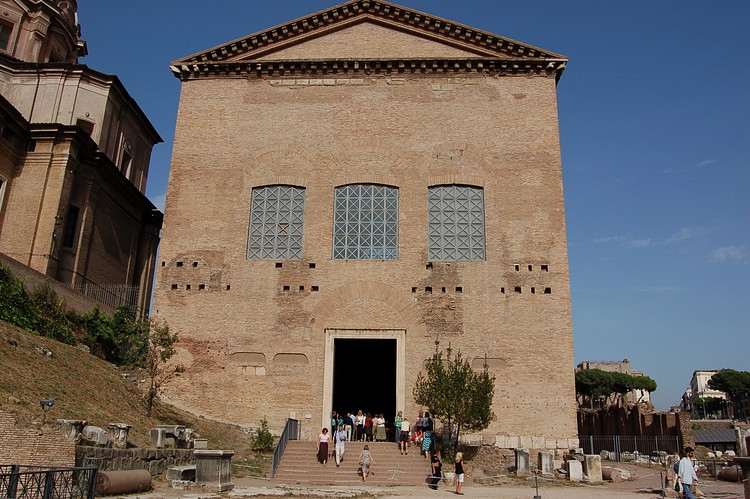
Western Civilization is forever indebted to the people of ancient Greece and Rome. Among the numerous contributions these societies made are in the fields of art, literature and philosophy ; however, perhaps their greatest gift to future generations was the modern perception of government. The contemporary idea of democracy, while borne out of the political struggles in the city of Athens, came to fruition in the Roman Republic, surviving, despite the constant interference of the emperor, through the Roman Empire. Although the present definition of democracy has changed considerably, one must still recognize its early evolution in that eternal city, Rome.
FROM MONARCHY TO REPRESENTATION
The Roman Republic emerged out of what one historian called “the ashes of the monarchy.” Years underneath the unyielding yoke of a king taught the people of Rome that they had to safeguard against the rule, and possible oppression, of one individual. The real authority or imperium of the republic, and later empire, was to be divided among three basic elements - elected non-hereditary magistrates, a Senate to advise and consent, and popular assemblies. Unfortunately for many people in Rome, in the early stages of the Republic, power lay solely in the hands of the elite, the old landowning families or patricians. The remainder and largest share of the city's population - the plebeians - had few if any rights. This unequal division of power would not last very long.
THE CONSULS
Instead of a king, and to guard against despotism, the new government chose consuls, two in number. These individuals were not elected by the populace but appointed by the popular assembly, the Comitia Centuriata. Each consul served a one-year, non-consecutive, term, although he could serve a second or third term later. As both political and military heads of state, consuls possessed supreme executive power, commanding the army, presiding over the Senate, and proposing legislation;however, as a safeguard each consul had the ability to veto the other's decision - an intercessio. As a symbol of their authority, they wore a traditional woolen toga with a purple border, sat upon a special chair or sella curulis, and were attended by at least six special assistants or lictors. Their symbol was the fasces, the bundle of rods and axe. At the end of their one-year term, they were held accountable to the popular assembly for any decisions made or actions taken. Many consuls would have their duties extended by becoming a proconsul, a governor of one of the many Roman provinces. Initially, while the position of consul was open only to patricians, plebeians became eligible in 367 BCE and by 342 BCE legislation dictated that one of the two consuls had to be a plebeian. Famous figures who served as consuls include Julius Caesar, Marcus Licinius Crassus, Pompey the Great, and Mark Antony.
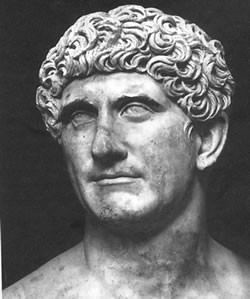
Bust of Mark Antony
THE SENATE
Unlike later parliamentary bodies, the Roman Senate had little if any legislative authority, for that power wrested in the hands of the popular assemblies. Originally open only to the patricians, the Senate had what one might call “indirect” executive power called auctoritas. And, while it had no legal power, it still held significant influence, serving as an advisory body to the consuls and later emperors. Members of this conservative body were unpaid and served for life unless found guilty of public or private misconduct. Senators were forbidden to engage in banking or foreign trade.
Throughout most of its existence, the Roman Senate remained the domain of the wealthy. And, while its ability to influence leadership decreased over time, especially under the reign of the emperors, membership in this hallowed institution varied.During the age of the kings when it served as a council or patres et conscripti, its number was firmly established at 100;however, later, under Tiberius and Gaius Gracchi during the 2nd century BCE, the number was increased to 300. A century later, Sulla, who hoped to enact serious land reforms, would triple this sum when he enlarged the Senate to 900. While Julius Caesar would add another hundred, bringing the total to 1,000, Emperor Augustus set its membership at 600.
THE SENATE DISCUSSED BOTH DOMESTIC AND FOREIGN POLICY, SUPERVISED RELATIONS WITH FOREIGN POWERS, DIRECTED THE RELIGIOUS LIFE OF ROME, AND CONTROLLED STATE FINANCES.
While the Senate may have lacked any genuine legislative authority, it did have fundamental responsibilities that made its opinion essential to the functioning of Roman government. First of all, the senators not only discussed both domestic and foreign policy but supervised relations with foreign powers. They directed the religious life of Rome, and most importantly, controlled state finances. Initially, after the fall of the monarchy, senators were named by the consul, but, with the passing of the Lex Ovinia in the 4th century BCE, this power was transferred to the censor, and it was the censor who could add new members. Sessions of the Senate were called by the magistrates, who would provide an agenda of the topics for discussion.And, since the meetings were held in private to avoid public scrutiny, unlimited freedom of speech allowed each senator to give his opinion or senatus consultum.
This power to influence the opinions of both the magistrates and public allowed a number of prominent senators to emerge and among these were Cato the Elder, his grandson Cato the Younger, Marcus Junius Brutus, and lastly, Marcus Tullius Cicero. The first, Marcus Porcius, known to history as Cato the Elder or Cato the Censor, was a foremost orator and statesmen. Although remembered for his opinions on the Republic's declining morality, he is better known for his rant on the Senate floor during the final years of the Punic Wars. Carthage, he said, must be destroyed. “Carthago delenda est.” Of course, in the end, Rome would follow his suggestion and eventually raze the beaten city. Cato the Younger followed in his grandfather's footsteps. A supporter of Pompey and vocal critic of Julius Caesar, he chose suicide rather than succumb to the dictator. Next, his son-in-law, Brutus, along with Senators Decimus, Cimber, and Gaius Trebonius, participated in the assassination of Julius Caesar. And, finally, there was the famed orator, lawyer and politician Cicero, another vocal critic of Caesar and idealistic defender of the Republic. Although not a participant in the murder of Caesar, he was a supporter of, and sought clemency for, the assassins. Cicero escaped Rome but was pursued by Caesar's adopted son and heir Octavian and murdered.
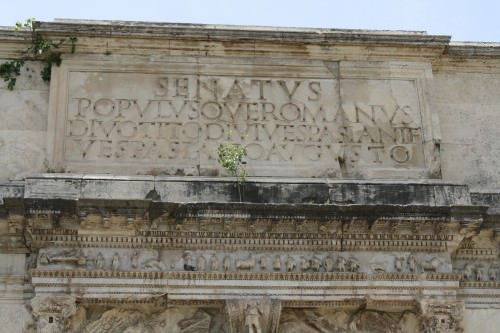
Inscription, Arch of Titus
THE ASSEMBLIES
Instead of authority lying in the Senate, power to pass laws was given to a number of popular assemblies. First, there was the Comitia Curiata, a legislative body dating back to the days of the kings which evolved into the Comitia Centuriata. Next, representing the plebeians there was the Concilium Plebis, and, lastly, also dating back to the time of the monarchy, there were the various smaller tribal assemblies.
Although many may not view these assembilies as truly democratic, until the emergence of the empire they held the power of the people in their hands. After the fall of the monarchy, the original Comitia Curiata, representing the three major tribes, lost the right to enact laws but retained, temporarily, the power of lex curita de imperio - the authority to confirm the naming of the magistrates; it also witnessed the appointment of priests, adoptions and wills. However, over time, it became largely ceremonial, and in its place the very conservative Comitia Centuriata - another wealth-based assembly- emerged. The membership of this new body was divided into centuries (one hundred men), 373 in total. Each century voted as a block;therefore, the wealthier centuries outvoted the “poorer” ones. Unlike the other assemblies, who met in the Forum, the Centuriata met on the Campus Marcus or Field of Mars outside the city. Its duties included electing various magistrates (consuls, praetors, and censors), enacting laws, declaring war and peace, and invoking the death penalty on Romans who were arraigned on political charges.
THE ESSENTIAL ROLE OF ASSEMBLIES IS SEEN IN THE ROMAN ARMY 'S USE OF SPQR - SENATUS POPULUSQUE ROMANUS OR SENATE AND ROMAN PEOPLE - ON THEIR MILITARY STANDARDS.
Aside from the Centuriata, there were the Concilium Plebis or the Council of the Plebs and the Comita Tributa or tribal assemblies. As stated earlier, the Council of the Plebs emerged from the Conflict of Orders and represented the concerns of the plebeians. Like the other assemblies, they voted along tribal lines with each tribe having one vote. They enacted laws or plebiscites that pertained initially to the plebeians but eventually became binding to all citizens. They named tribunes or tribuni plebis and held trials for non-capital offenses. Each plebeian was required by law to take an oath, a pomerium, to support the decisions of the tribunes.
Next, there were tribal assemblies, established by the Valerio-Horatian Laws of 449 BCE and which consisted of both patricians and plebeians. These assemblies were divided into the 35 tribes, based on one's ancestors, and could be summoned by a consul, praetor or tribune. They dealt with minor public business and elected quaestors, aediles, and military tribunes. They also voted on legislation put forth by the magistrates and served as a court of appeals on non-capital cases.
During the time of the Republic, these various assemblies were the voice of the citizens of Rome, and although not fully democratic in the modern definition of the word, they allowed at last some portion of the Roman citizenry to be heard. Their essential role in Roman government was crucial enough that the army inscribed on their military standards the letters SPQR - Senatus Populusque Romanus or Senate and Roman people.

Roman Citizen Voting
THE TRIBUNES & THE RULE OF LAW
Initially, as one might have gathered, the real authority of the republic lay in the hands of the patricians; however, this power could not and would not remain. The plebians, who comprised the majority of the army and did most of the real work, rebelled, going on strike and demanding an equal voice in the government. Out of this struggle came the Conflict of Order, a class “war” that lasted from 494 to 287 BCE. It was a fight that brought about significant change: a plebeian assembly, the Concilium Plebis. Through this new congress, the plebeians could elect tribunes who, like consuls, served for one year. Their primary function was to safeguard plebeian rights against patrician abuse. Their duties were in many ways similar to that of the consuls; however, they could veto any magistrate decision as it related to the plebeians. Later, to further protect the rights of the plebians, the Twelve Tables also called the Ten plus the Two was enacted as the first record of Roman law - there had never been a written constitution in Rome. By the 4th century BCE all citizens had the right of provocatio populum - the right to appeal the decision of a magistrate, and by 287 BCE the Lex Hotensia stated that laws passed by the Concilium Plebis were binding to all people, even patricians.
THE MAGISTRATES - PRAETORS, QUAESTORS & AEDILES
In the early years of the Republic the consuls realized that they needed lesser magistrates to oversee various administrative functions - some of these offices had existed under the king. Many individuals would later use these lesser positions as a path to a consulship. This “path” was called the cursus honorum. First among these “lesser” magistrates were the praetors who were the only ones besides the consuls to hold imperium power with the authority to not only preside over the Senate but also command the army. Besides serving when the consuls were away, their official function was to oversee the judicial duties of the Republic, holding both civic and provincial jurisdiction.
Then there were the quaestors, the financial officers, holding power of quaestores aerarii or control of the treasury located in the Forum of Rome. They collected both taxes and tributes. Another important individual was the aedile. Initially appointed to administer the temples, his duties expanded throughout the early years of the Republic (he disappeared with the onset of the empire). This official had a multitude of responsibilities such as supervising public records and managing public works (ie roads, water and food supply) as well as the markets, festivals and games. In addition, since the members of the Senate and Concilium Plebis wanted to keep their proceedings a secret from public scrutiny, the aediles had custody of their records.

Temple of Saturn, Rome
THE CENSORS & MAGISTER POPULI
Next, there was the censor - often these officials were former consuls. The position was viewed as the pinnacle of an individual's career. Under the king and later the Republic, this person not only oversaw public morality but took the census, registering both citizens and their property. He was elected every four to five years and held the position for only eighteen months. The position was popular with many former consuls because it came with several unique benefits. Besides taking the census, he could censure a person or even disqualify him from voting. The censor also approved all public works contracts.One of the more notable of the early censors was Appius Claudius who not only sanctioned the first aqueduct but commissioned the Appian Way, the road from Rome to Capua. Another, Cato the Elder, believed that Rome was declining morally and as a result expelled several Roman senators because of their supposed bad behavior.
Lastly, one must not overlook a unique if not rare “public” official - the dictator or magister populi. In times of extreme emergency, this person was appointed to serve for six months; however, during this period he held complete authority. The last person to hold this position was Julius Caesar - he was named by the Senate to serve for life. Unfortunately for Caesar, “life” lasted only until the Ides of March. His death brought the end of the Republic.
THE EMPERORS
As Rome expanded its borders northward into Gaul, further east into Asia, and southward into Africa, the government of the Republic was unable to cope and so entered the first emperor, Augustus, and the birth of an empire. Under the authority of the emperor, the popular assemblies all but disappeared and the Senate became more and more ceremonial. They would only really endorse the wishes of the emperor. Augustus held supreme executive authority, awarded by the Senate, and granted powers beyond that of either a consul or tribune - consular imperium and tribunicia potestates - with the ability to not only introduce legislation and veto laws but also command the army. With the consent of the Senate, Augustus took the title of princeps meaning “first citizen.” He assumed the title of consul and provincial governor which gave him control of a majority of the military. He controlled the imperial patronage and no one could hold office without his consent. To maintain authority and to protect himself from his own “Ides of March,” he created the Praetorian Guard. Several emperors such as Caligula ’s uncle Claudius were “named” by the Praetorian Guard - rubber-stamped by the Senate. While one should remember that the emperor Caligula was also removed by the same Praetorian Guard.

Augustus
Augustus also interfered with the religion of the empire. In his attempt to cleanse the reclining morality of Rome he chose to resurrect the old “religion” by rebuilding decaying temples, reviving old religious ceremonies and assuming the title of Pontifex Maximus or Chief Priest. To the average citizen, he was the father of the country or pater patriae. This almost worship of the emperor would ultimately morph into the imperial cult. During the empire, the duty of the government was simple - to maintain peace and order, the Pax Romana or Roman Peace.
CONCLUSION
The Roman government of the old Republic had created a unique system of the division of power which was a safeguard against oppression by any single individual. Power, for the most part, lay with a voting public. While not perfect by any definition of the word, it allowed some of the people to have a say in how their government operated. There were elected officials and a representative body. Of course, as long as there were games, festivals, and grain, the average Roman citizen was happy. Under the emperor, the government changed and the emperor became the ultimate decision maker, he had the last word. Considering the context of ancient times and contemporary forms of government, and taking into account its albeit limited representative elements, Rome must, nevertheless, remain an outstanding example of a successful ancient government.
Tarquinia › Ancient History
Definition and Origins
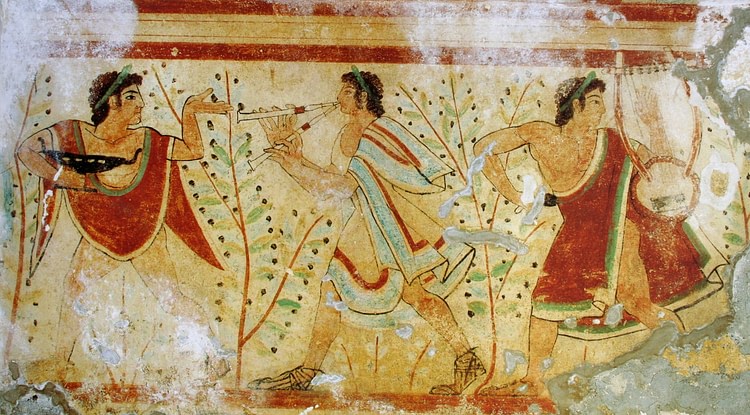
Tarquinia ( Etruscan name: Tarch'na or Tarch, Roman name: Tarquinii) is a town located on the western coast of central Italywhich was an important Etruscan and then Roman settlement. It is famous today as the site of around 200 Etruscan tombs which were rich in artefacts and decorated with magnificent wall paintings showing lively scenes from mythology and Etruscan everyday life. The tombs are designated as a UNESCO World Heritage site.
EARLY SETTLEMENT & MYTHOLOGY
The site of modern Tarquinia (formerly Corneto), or Tarch(u)na as it was known to the Etruscans, is today located on a plateau some 6 km from the central Italian coast, 90 km north of Rome. Excavations in the 19th century CE revealed that the site was inhabited in the Late Bronze Age, and from the 9th century BCE, by the Iron Age culture known as the Villanovan, a precursor of the Etruscans.
According to Etruscan mythology, the city was founded by Tarchon, grandson of Hercules and the son of Tyrrhenus, the king of the Tyrrhenian Sea. The site was also the spot where Tages, the wise child, sprang from the earth. This legendary figure was revealed when a field near Tarquinia was being ploughed and he showed Tarchon, or the 12 Etruscan priests called the lucumones, the art of divination through reading omens and animal entrails, and how to maintain contact with the gods ( Etrusca Disciplina ). It is interesting to note that archaeologists have discovered a 9th-century BCE child burial at the site which was the subject of a long cult, and this may perhaps be a physical link to the myth of Tages.
TARQUINIA BECAME THE MOST IMPORTANT OF THE 12 (OR 15) ETRUSCAN TOWNS WHICH FORMED THE LOOSE CONFEDERACY KNOWN AS THE ETRUSCAN LEAGUE.
A THRIVING ETRUSCAN CITY
Tarquinia became the most important of the 12 (or perhaps 15) Etruscan towns which formed the loose confederacy known as the Etruscan League. Very little is known of the league except that its members had common religious ties and leaders met annually at the Fanum Voltumnae sanctuary near Orvieto (exact location as yet unknown). The other members of the league included Cerveteri (Cisra), Chiusi, Populonia, Vulci (Velch), and Volterra. The precise workings of Tarquinia's political structure are not known beyond that it was first a monarchy and then likely had a government dominated by the aristocrats of the city.
Tarquinia's prosperity from the 8th century BCE was based on its role as a trade centre and the presence of rich mineral deposits nearby. Fertile land was put to good use for agriculture, especially the cultivation of olives and vines. Goods were manufactured and exported such as bronze work, gold jewellery, and linen. A wealthy elite was formed as testified by large and handsomely decorated tombs. One resident, Demaratus of Corinth, who was the father of Rome 's King Lucius Tarquinius Priscus, indicates the cultural links with Greece at that time. A port was established at Gravisca and goods were imported and exported across the Mediterranean, especially with Greek cities, Phoenician traders, and, later, Carthage.Greek Art, especially the Eastern Greek or Ionian style, was especially influential on Etruscan art and can be seen both in the tomb wall -paintings of Tarquinia and in the appreciation of Greek art objects such as fine black-figure pottery, found in abundance in the city's tombs.
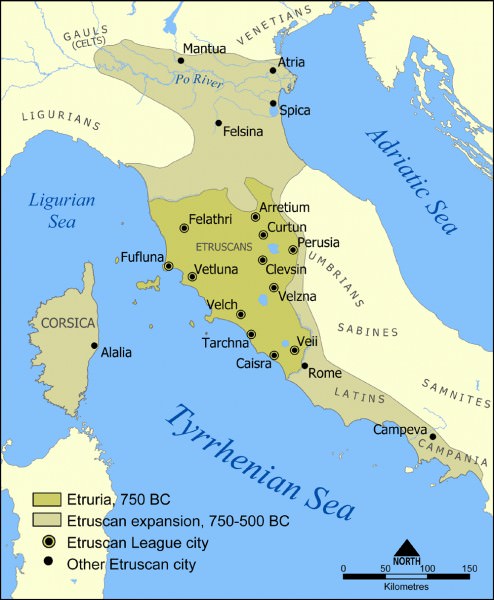
Etruscan Civilization
Continuing to flourish in the 6th and 5th centuries BCE, the city constructed large fortification walls (10 km in total length), a temple, and impressive chamber tombs. The temple, built in the 4th century BCE on the site of an earlier structure and known by the later name of the Ara della Regina (Altar of the Queen), was dedicated to an unknown god or goddess (although a votive bronze rod found there was dedicated to Artemis ). Terracotta winged horses were added to the building in the 4th century BCE.
Etruscans cities, in general, suffered a partial decline between 450 and 350 BCE when Syracuse gained control of the lucrative local shipping routes. Tarquinia did recover somewhat, but a new and more deadly threat approached from the southern horizon: the Romans. Initially, treaties were signed between the two cultures, but as the Romans expanded, they realised that the weak political alliance of the Etruscan cities made them ripe for conquest. Indeed, the Etruscan cities were known to have fought each other in long-standing rivalries for regional dominance. An ongoing war against Rome ensued with atrocities on both sides – notably the sacrifice of 307 Roman prisoners in the forum in 356 BCE, which brought a retaliation murder of 358 Tarquinian prisoners in Rome.

Ara Della Regina, Tarquinia
In 281-280 BCE Etruria finally fell under Roman control, and in 181 BCE, a Roman colony was founded at Gravisca. In 89 BCE Tarquinia was demoted to the status of a municipium, but its inhabitants were by now granted the right of Roman citizenship. A slow slide into obscurity followed, and Tarquinia was abandoned in the medieval period with the population shifting to nearby Corneto, which would eventually change its name to Tarquinia.
ARCHAEOLOGICAL REMAINS
The Monterozzi cemetery has Etruscan remains and, beneath these, evidence of an extensive Villanovan settlement. The remains of the 4th-century BCE temple are located on the Pian di Civita. It is the largest known Etruscan temple with a surviving limestone blocks base measuring 77 x 34 m. The temple was of Tuscan design, with side walls protruding at the front and an access ramp flanked by steps on the east side. The inner cella had three chambers at the rear. Pieces of its decorative sculpture also survive, including a charioteer with a lance and, also in terracotta, reliefs of two winged horses and fragments of a goddess which was part of a plaque placed over a beam-end of one of the pediments.

Etruscan Winged-horses, Tarquinia
Other artefacts excavated from the site include painted marble sarcophagi and bronze hand mirrors which are engraved with scenes on the back (especially of myths). These mirrors typically had wood, bone, or ivory handles and were a symbol of status in Etruscan society. Another artefact common to Tarquinia is relief slabs. Carved from the local nenfro stone, they have scenes showing figures embracing, dancing, dining, and scenes from mythology, usually in pairs of figures separated by decorative frames. The slabs were perhaps used as tomb markers.
There are many examples of the Etruscan bucchero wares with its shiny dark grey surface and bronze work such as vessels and tripods. Finally, there is a series of 1st-century CE Latin inscriptions, known as the Elogia Tarquiniensia, which describes the lives of the city's most celebrated citizens. The inscriptions were carved on marble slabs and placed on the pediments of a statue of the person described.
THE TOMBS OF TARQUINIA
The earliest tombs at Tarquinia date from the late 7th century BCE. In total, there are 6,000 tombs, around 200 of which had painted interior walls. They constitute the largest pre-Roman tomb complex from antiquity, and many of the chambers therein are decorated with colourful and lively wall paintings. They are an invaluable source of information on Etruscan daily life and religious practices. The paintings are applied to a thin base layer of plaster wash with the artists first drawing outlines using chalk or charcoal.
THE TOMBS AT TARQUINIA CONSTITUTE THE LARGEST PRE-ROMAN TOMB COMPLEX FROM ANTIQUITY.
The earliest tombs are rectangular rock-cut chambers which are painted to replicate the architectural features of real houses.Others have ceilings painted to mimic tent fabric, alluding to the earlier Etruscan practice of using tents to cover the deceased.Mythical creatures are commonly painted on pillars, and banquet scenes near the ceilings. Later tombs have false doorways and more ambitious painted scenes covering entire walls, especially scenes showing diners reclining on couches, drinkers on mats, Dionysiac revelry, hunting, games, and figures bidding a fond farewell to the deceased.
The Tomb of the Bulls, dating to 540-530 BCE, is a typical example and has the name of its occupant painted on one wall: Aranth Spurianas. The tomb has a central chamber leading to two smaller rooms. Painted scenes include Achilles attacking Troilos, the young Trojan prince. A frieze above this scene shows two copulating couples (one heterosexual trio and one homosexual couple) and two bulls. Another wall in the tomb has the myth of Bellerophon and Pegasus, with the hero riding a horse and facing the Chimera and a sphinx. Finally, there is a scene of a young man riding a hippocamp (mythical seahorse) over the ocean, perhaps as a metaphor for the tomb occupant's journey into the next life.
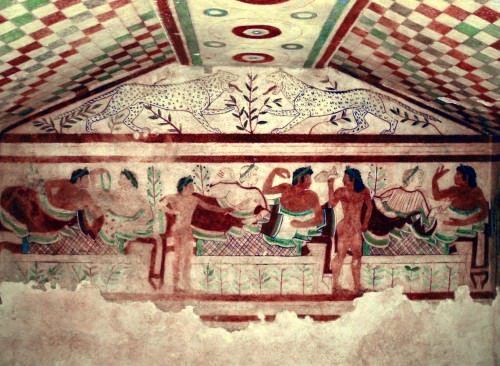
Tomb of The Lionesses, Tarquinia
The misleadingly named Tomb of the Lionesses, built 530-520 BCE, actually has two painted panthers, a large drinking party scene, and is interesting for its unusual checkered pattern ceiling and six painted wooden columns. There is also a fine frieze of dolphins, birds, palmettes, and lotus flowers. The Tomb of the Augurs (c. 520 BCE) has a scene of two nude wrestlers – named as Teitu and Latithe, and probably slaves – while between them lie three bowls, the prizes for the victor. There is also a representation of a figure who appears in several other tombs, Phersu - a man wearing a black-bearded mask who holds a ferocious dog on a long leash, which attacks a man whose head is wrapped in a cloth. This may be a scene of prisoner execution.
The Tomb of The Baron (named after its discoverer Baron Kestner), dating to c. 510 BCE, has various human figures either standing or riding, and these include a woman caught in the act of saying farewell, presumably to the tomb's occupant.Contemporary with this tomb is the Cardarelli Tomb (named after a local poet), which has a scene of a woman, wearing a flowing cape and red pointed shoes, accompanied by a slave girl and boy, the latter carrying a fan. Other figures include two nude boxers, dancers, and musicians.
The c. 480 BCE Tomb of the Bigas has a representation of athletic games and a chariot ( bighe ) race, watched by a crowd of spectators, imaginatively drawn with some figures in three-quarter view and others foreshortened to provide perspective. The Tomb of the Dying and Tomb of the Dead Man (c. 470 BCE) are unusual in that they actually portray the occupant laid out on their deathbed surrounded by mourning relatives. Finally, the Tomb of the Blue Demons (420-400 BCE) gives a rare glimpse of the Etruscan vision of the Underworld, here inhabited by blue- and black-skinned demons, one of which holds two snakes, but there are also the more welcoming, already dead relatives of the tomb's occupant, awaiting the family's reunification in the afterlife.
MAP
LICENSE:
Article based on information obtained from these sources:with permission from the Website Ancient History Encyclopedia
Content is available under License Creative Commons: Attribution-NonCommercial-ShareAlike 3.0 Unported. CC-BY-NC-SA License